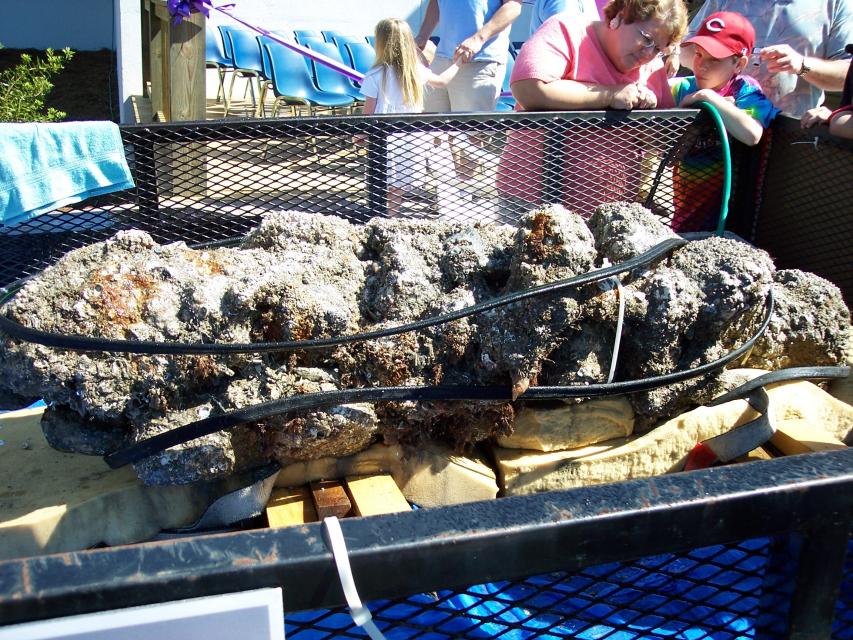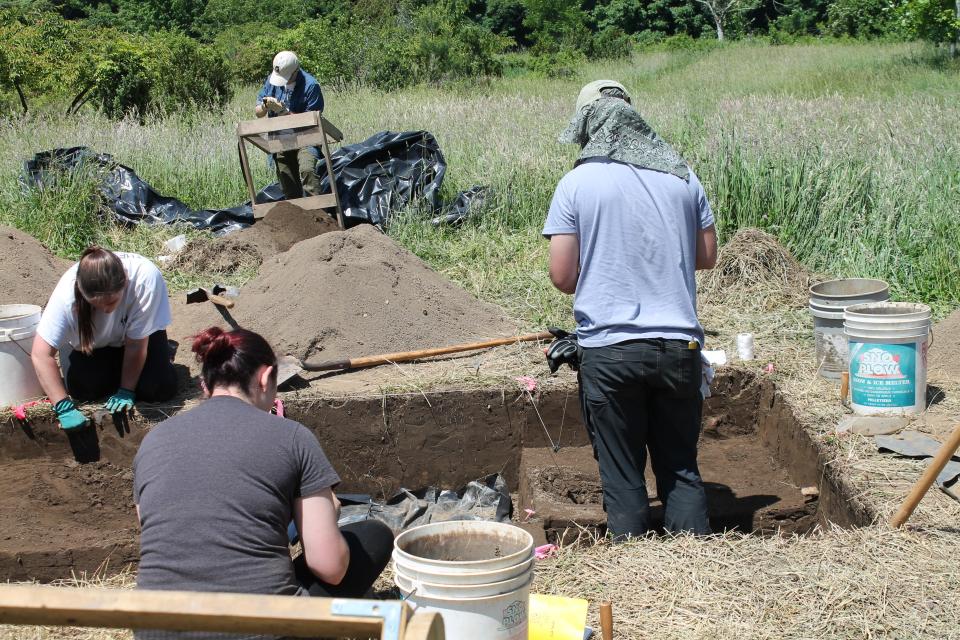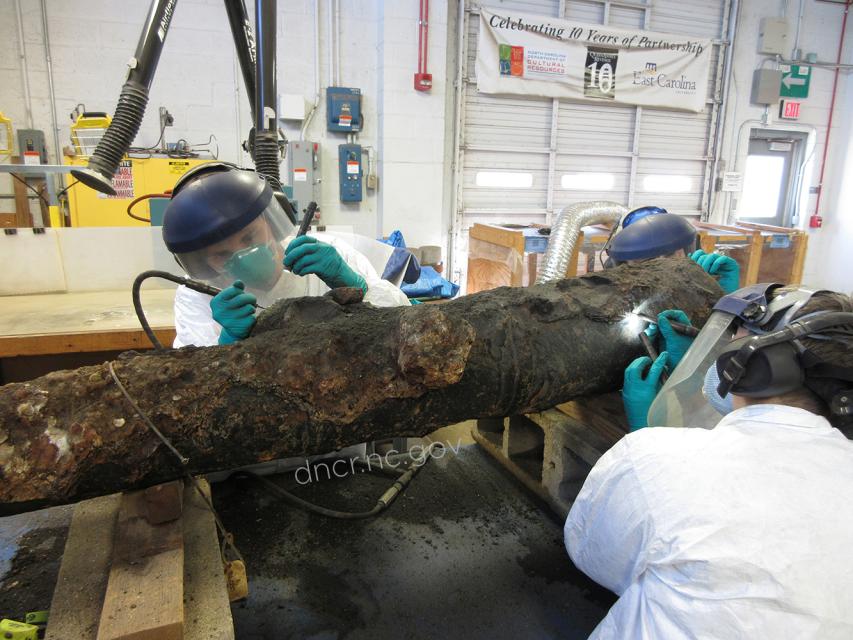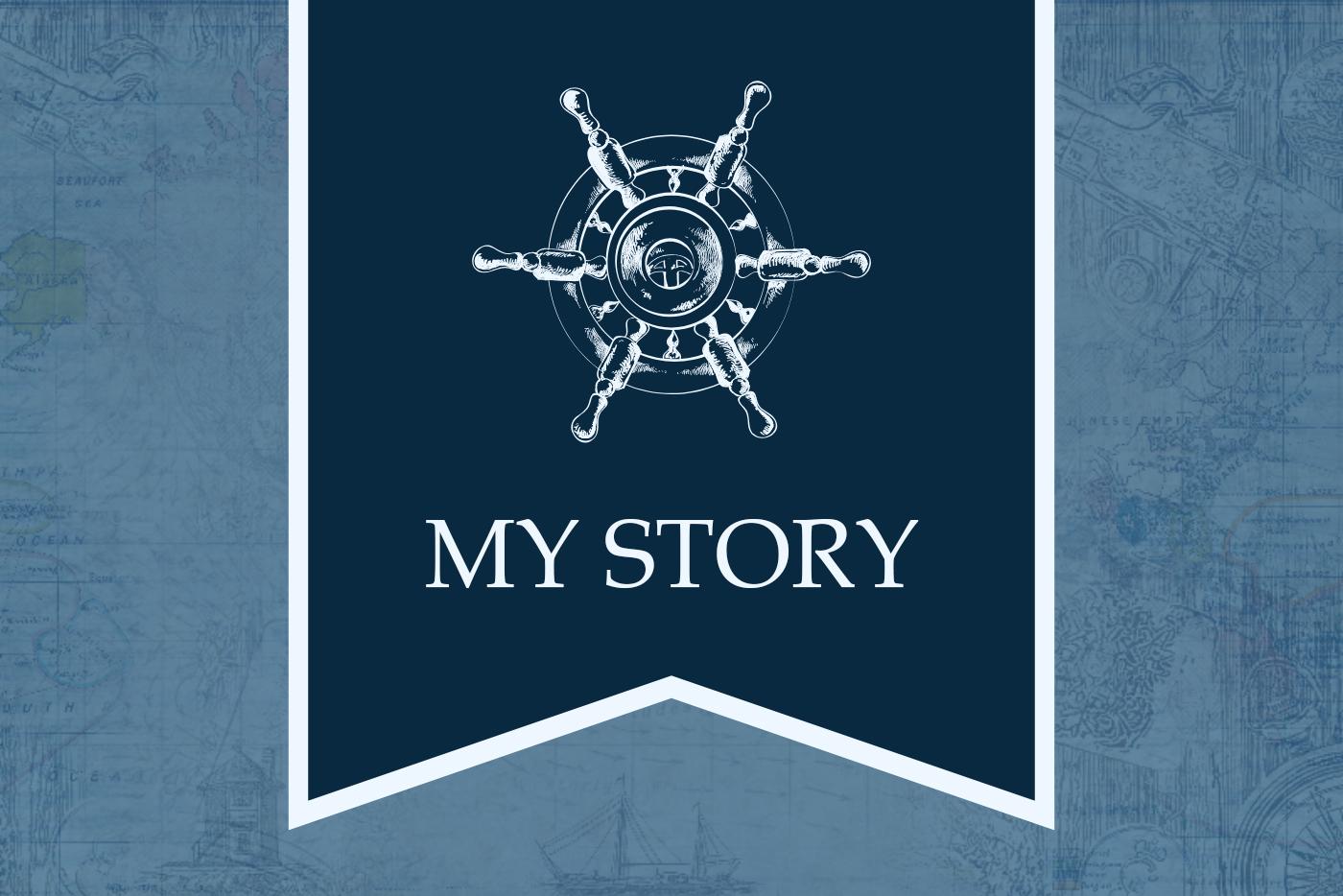Author: Darby Robbins, Conservator

My name is Darby Robbins, and I am a conservator and the most recent addition to the permanent staff of the Queen Anne’s Revenge Conservation Lab. While I wasn’t always set on becoming an archaeologist, my journey into the field of archaeological conservation and the QAR Lab progressed naturally as I pursued my lifelong interests in history, science, and human relationships to the ocean.
My favorite family activities as a kid could generally be lumped into two categories: those related to history and those that involved water. My childhood summers were spent in and around the Morehead City area, complete with (at least) annual visits to the NC Maritime Museum in Beaufort, Fort Macon, and the NC Aquarium at Pine Knoll Shores. One of my earliest encounters with the Queen Anne’s Revenge Project and the concept of maritime archaeology was in 2006, when I attended an event featuring a still-concreted cannon recovered from the site that year.
Like many young folks, the dreaded “What do you want to be when you grow up?” question was difficult to answer while I was going through high school. I cycled through a bunch of the greatest hits (marine biologist, veterinarian, zookeeper, forensic scientist, etc.) for a while, generally focusing more on science than anything else. However, remembering my love of history and interest in archaeology from my childhood, I decided a couple of months into my first semester at Appalachian State University that I wanted to pursue archaeology as a major and, hopefully, a career. Specifically, I wanted to go into maritime archaeology to get back to my love of water. I began attending ECU’s Program in Maritime Studies in the fall of 2019. It was at that time that I had the opportunity to join the QAR Lab’s team for the first time as a graduate assistant. Working at the Queen Anne’s Revenge Conservation Lab as a student helped me hone in on my passion within the larger field of maritime archaeology: while I love to go out into the field, I find a lot of fulfillment in taking care of the artifacts that are brought up during fieldwork.

I also spent some time during grad school working in ECU’s Joyner Library Special Collections Conservation Lab. While treatments for paper and maritime archaeological artifacts are vastly different, I appreciated the chance to work on new materials and learn some of the finer skills that paper and book conservators use daily. Additionally, my work in the library gave me a strong foundation in major aspects of collections management like pest control, environmental monitoring, and mold remediation.
I continued to volunteer at the QAR Lab after my graduation in 2022 before picking up and moving down to Tallahassee, Florida to work as a conservator for the Bureau of Archaeological Research’s Collections and Conservation team. Many of the skills I picked up in the QAR Lab and in ECU’s Special Collections Conservation Lab proved extremely useful in treating and maintaining Florida’s archaeological collections, which contain artifacts from both terrestrial sites and underwater sites much like Queen Anne’s Revenge. I regularly dealt with artifacts ranging from anchors to pre-contact dugout canoes, following them from first intake to final transport for display in museums across Florida.
I returned to Greenville and the Queen Anne’s Revenge Lab in March of this year and have hit the ground running, taking over regular testing and treatment of many of the lab’s metal artifacts. Now that I’m back in North Carolina, I can’t wait to continue growing in my knowledge of North Carolina maritime archaeology and conservation!

Fun fact: The cannon that was raised and displayed at the grand re-opening of the Pine Knoll Shores Aquarium in 2006 is being actively treated in the lab right now! Working on the artifact that sparked my interest in North Carolina archaeology so long ago has been a surreal experience, and I’m excited to have the opportunity to see it both at the start of its conservation journey and to see it through to the end of its treatment!
Images:
-Image of cannon C5 taken by Darby’s mom in 2006. Image by Kelly Robbins. Used with permission.
-Darby participating in an Appalachian State University terrestrial excavation as an undergraduate. Image by Darby Robbins. Used with permission.
-Darby removing concretion from cannon C5 as the newest lab staff member. Image by NC Department of Natural and Cultural Resources.

